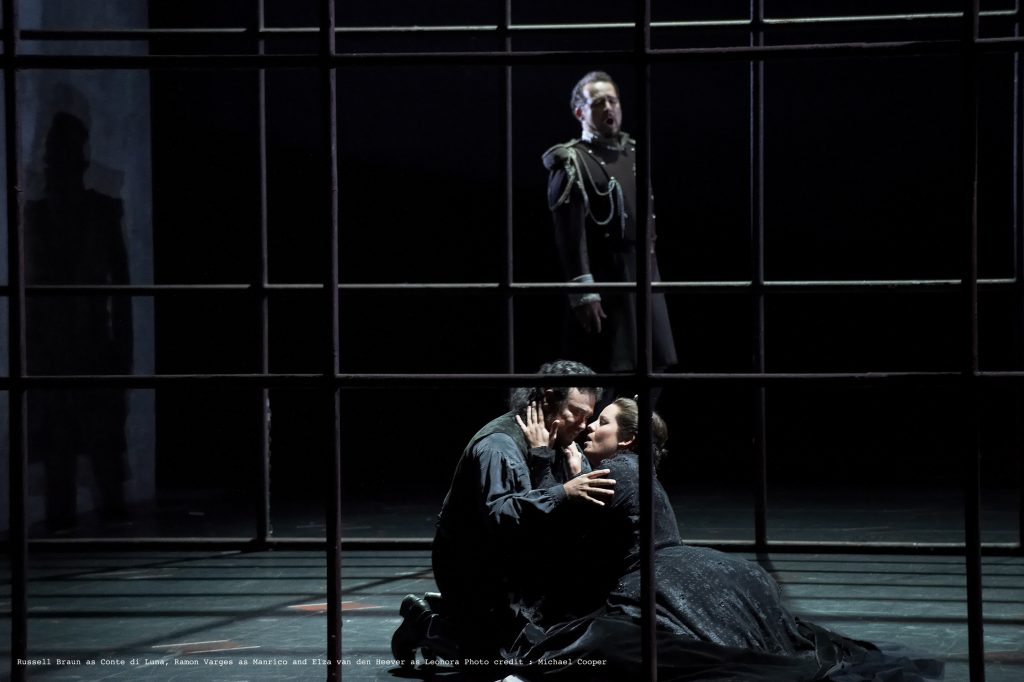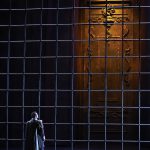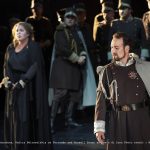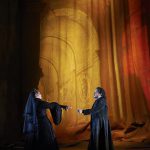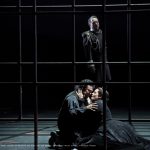Enrico Caruso once said, or so the story goes, that Il Trovatore was a simple matter to stage successfully. It made only one demand of any enterprising impresario. Hire the four greatest singers in the world. The COC’s 2012/2013 season opener this fall, showcases an exceptional cast measured against any standards, even the Great Caruso’s impossible expectations.
This is an opera packed with challenges for singer actors and audience alike. Leaving aside the vocal demands — as if—the story or, more to the point, Trovatore’s backstory approaches the mind-boggling.
Long dark years before the opera opens, the ruthless father of a Spanish nobleman, Count di Luna, ordered an old gypsy woman to be burned at the stake for allegedly casting a curse on the count’s infant brother. While her pyre still blazed, the old gypsy’s daughter stole the baby in revenge and disappeared. Later, amid the smouldering ashes, were found the charred bones of a tiny newborn. Forever suspecting a kidnapper’s ruse, di Luna’s father has sworn his oldest son to a dying oath. Find the old gypsy’s daughter and, with her, the count’s missing brother.
Lights up on the present. Fifteenth century Spain. Leonora, a lady at court and the object of Count di Luna’s unwanted affections, has fallen passionately in love with Manrico, a dashing gypsy troubadour and leader of a rebel force fighting to overthrow di Luna’s oppressive princely patron.
Azucena, the woman Manrico has always believed to be his mother, confesses to him that she is the kidnapper di Luna seeks but not the murderer of the count’s long lost brother. In her maddened frenzy to avenge her mother’s death by fire, Azucena insists she snatched her own tiny son by hideous mistake and threw him into the flames only to quickly deny the claim a moment later. Manrico is confused. No wonder.
Di Luna takes the gypsy leader and his maybe mother prisoner after a failed rebel coup. Desperate to save Manrico, Leonora offers the count her hand in marriage in exchange for his pledge to free her true love. Yet another mix-up ensues. Manrico spurns Leonora who has secretly swallowed poison rather than marry the count. She dies. Enraged, the count has the gypsy leader promptly beheaded. From the shadows of her cell, Azucena cries out to the count that Manrico was, in fact, the count’s brother after all. The deadly web of vengeance is complete.
Are you still there?
Verdi’s librettist, Salvatore Cammarano, a former collaborator on several earlier operas, does more than toy with our emotions in his piece. The dramatic experience of Trovatore has the feel of being led through a dark moral labyrinth with no direct route to its centre. At times comprehending, at times downright baffled, we play our role as unblinking witnesses until suddenly Cammarano pushes us through a secret exit hidden at the heart of his twisted tale. Out we stumble, stunned and amazed, the last crashing crescendo from the orchestra still echoing in our ears.
For Verdi, story is music is story. His rollicking, grand opera-defining score, however, is not without its own singular set of hurdles to overcome. From a singer’s point of view, Il Trovatore is distinguished by a terrifyingly high tessitura. Baritone and mezzo are often asked to sound more like tenor and soprano. And tenor and soprano voices must climb to notes pitched somewhere above the stratosphere far beyond the reach of mere mortals. Little wonder so many opera artists delay entry to Verdi’s universe until they can engage the equivalent of vocal warp drive. In Trovatore, Verdi’s singing expectations are nothing short of other-worldly.
The role of Leonora, like that of Violetta in La Traviata, can be a launchpad to superstardom for a Verdian soprano. The maestro gifts her with great, deservedly famous arias like “Tacea la notte” (“The night calmly and peacefully”), not to mention the spotlit solo turn he later added for the character that occupies virtually half his last act. In these moments, South African Elza van den Heever owns the Four Seasons Centre stage, her voice clear, brilliant and soaring, glowing and radiant. This is a fiercely independent Leonora who refuses to play the part of victim.
Mexican-born Ramón Vargas, a regular at New York’s Metropolitan Opera, portrays his Manrico in vivid tonal colours tinted by his characteristic sparkling Italianate sound, ringing, bell-like top notes and a powerful but never intrusive vibrato. If there are more thrilling renditions of “Di quella pira” (“From that dark scaffold”), they are surely yet to be voiced. Vargas is an opera dynamo, capable of any task, yet so respectful and generous towards his co-stars that an engaging ensemble vibe always prevails in this muscular COC presentation.
As Azucena, arguably Il Trovatore’s psychologically deepest, darkest character, mezzo Elena Manistina conveys an almost elemental force, brooding and troubled as a gathering storm. Throughout her many pivotal story-turning scenes, Manistina’s voice flashes like lightning, rumbles like thunder, whispers and weeps. Hers is a nuanced, multi-dimensional Azucena, a woman trapped in a waking nightmare, as complex, in her way, as Verdi’s arch antagonist, the dastardly Count di Luna. Canadian Russell Braun has the rich, undeniably high note-friendly baritone Verdi demands although his tonal palette seems, perhaps, a shade light for the troubled nobleman. This is certainly by no means to condemn his sound as disappointing or unfit for the role. His vocal instrument may lack the velvety warmth of a robust bass undertone but there is no denying its expressiveness. Braun’s ability to bridge from steely violent purpose to the tender beauty of di Luna’s heart-breaking aria, “Il balen del suo sorriso” (“The radiance of her smile”), is a thing of wonder.
One final note re Jean-Noël Lavesvre’s set. The world of Il Trovatore, the space it inhabits, greatly adds to the opera’s impact. A military camp, a palace state room, a gypsy stronghold, a convent, a prison — the visuals progress in a kind of ironic counterpoint. In this new COC co-production with Opéra de Marseille, set pieces are scaled up to monumental proportions. The monolithic stone walls of the prison, the towering wooden doors of the convent all but dwarf any human presence. The visual metaphor is stunning. Waiting in the semi-darkness of the FSC auditorium surrounded by an utterly silent crowd of two thousand rapt onlookers, all anticipating the next set change, absorbing the scene that just was, is a not-to-be-forgotten experience. And no doubt part of Lavesvre’s imposing design.
The fact that the Canadian Opera Company has presented a near-impossible to present problem opera with such vitality and verve speaks to the growing maturity and ability of this talented, energetic company. Is there a finer opera orchestra and chorus working anywhere else in the world? Both perform superbly and contribute mightily to the sheer stage power of this memorable and effective Il Trovatore.

